Mankind has always sought not only to peek into the most secret corners of the Earth, but also to investigate amazing objects and phenomena beyond our native planet. Until recently, the colonization of another celestial body was only a fantasy of futurists and science-fiction writers, but the huge developments in the space industry make it clear that it is only a matter of time.
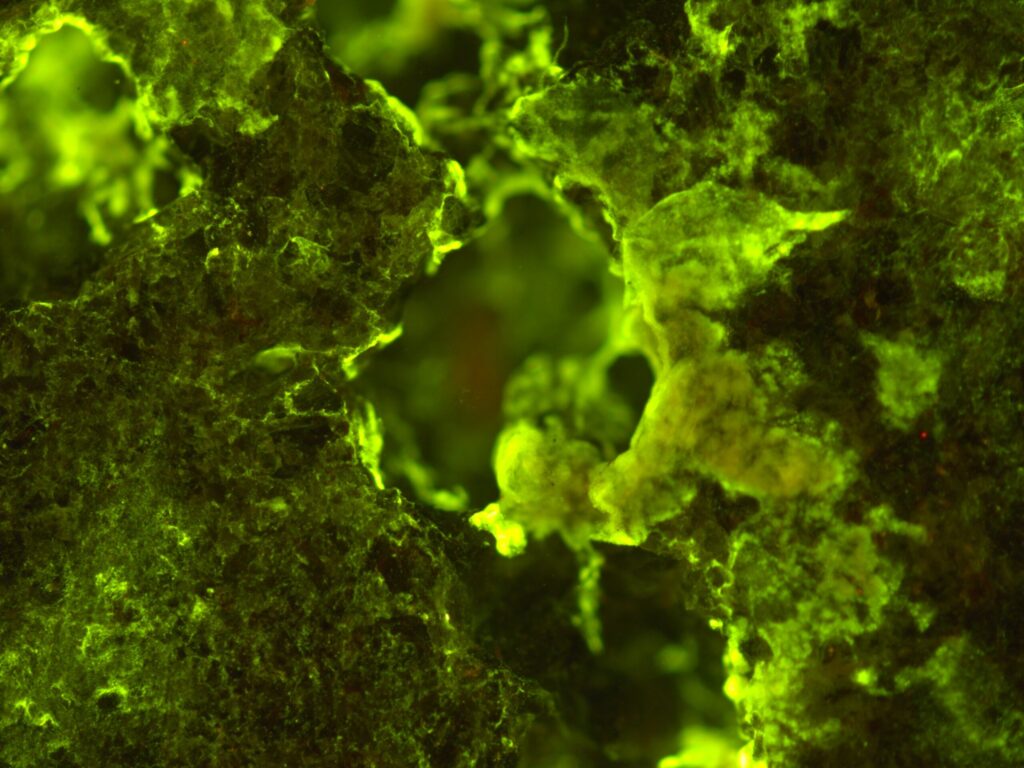
Thus, while creating a base on the Moon or Mars, it may be necessary to extract resources on site, and not to deliver them from Earth. Microbial mining technology can help solve this problem.
The use of microorganisms for mining is commonplace on Earth. Today, 20% of the world’s copper is mined with their participation. But is it possible to use such technology in extraterrestrial conditions? Recent studies by scientists claim that this is quite real.
Features of the environment on Mars and the Moon
The temperature regimes of the Moon are very different depending on the selenographic latitude. During the day, near the equator, the temperature reaches +120°C, and at night it drops to -130°C. The lowest temperature on the Moon was recorded at the bottom of the crater Hermit (-250°C).
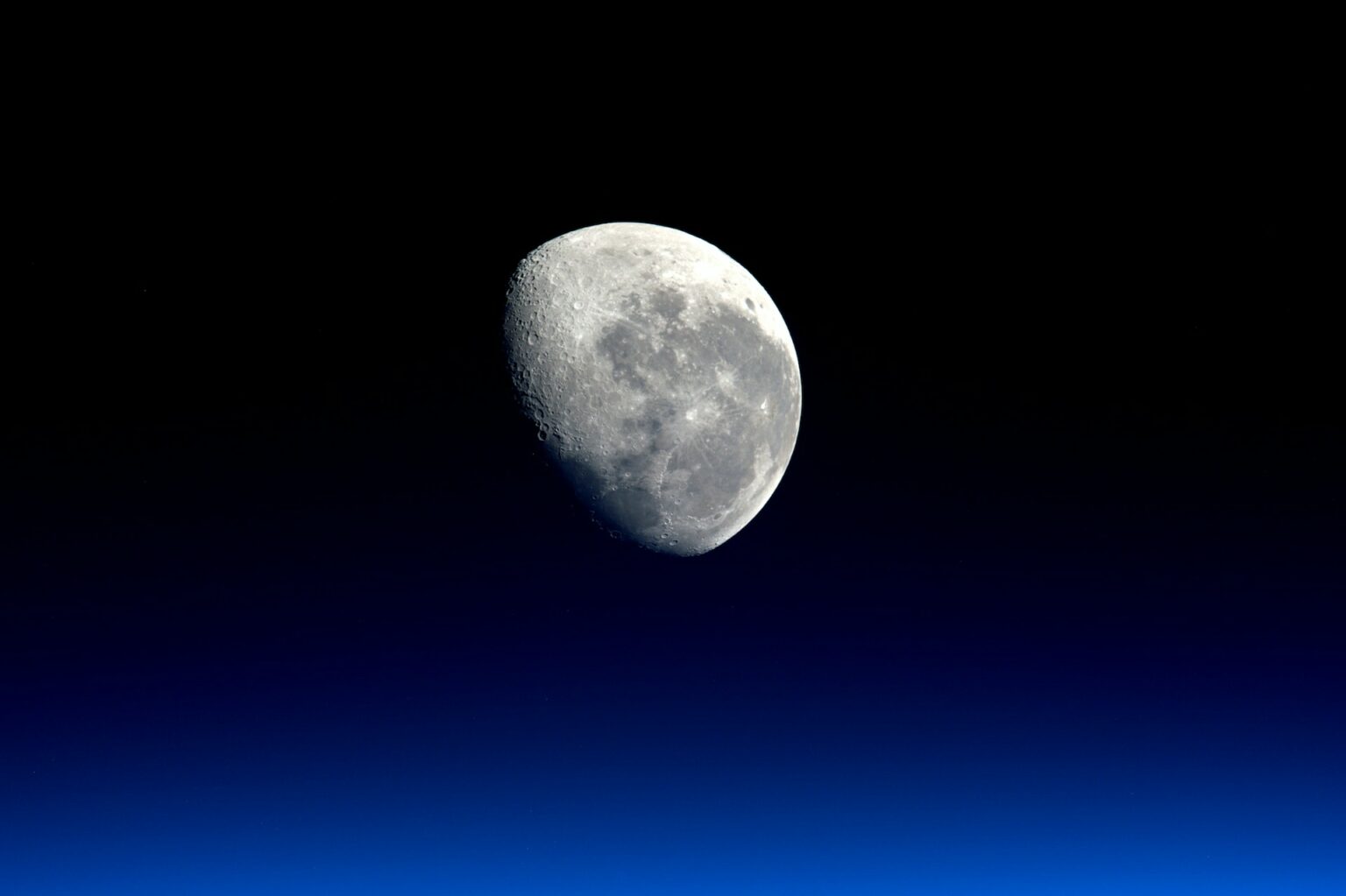
The Moon has an extremely rarefied atmosphere (gas shells of this type are called exospheres by scientists), containing gaseous potassium and sodium that are not characteristic of Earth. The force of gravity on the surface of our natural satellite is 6 times less than on Earth.
Some areas of the Moon are rich in iron oxide and titanium oxide. Rocks and regolith consist of 42% oxygen. The surface of our satellite is constantly exposed to the solar wind, it is extremely dry, but there is water in the form of ice at the poles (more than 600 million cubic meters).
Unlike the Moon, Mars has smaller temperature range, which is from -150°C to +30°C and is characterized by sharp diurnal, seasonal and latitudinal fluctuations. The red planet’s atmosphere is very thin and almost 150 times more rarefied than Earth’s — its surface pressure is on average 0.6% of the pressure near the Earth’s surface. It contains 96% carbon dioxide, up to 2% argon and 2% nitrogen, as well as water vapor and other gases in trace amounts. The acceleration of free fall on Mars is 62.5% less than on our planet. Radiation in an areocentric orbit is 2.5 times higher than its level in near-Earth orbit, not to mention the intense radiation on the Martian surface.
Geologically, Mars and Earth have many features in common, namely: most of the rocks on these planets are igneous (basalts). The red color of Mars is due to the presence of a large amount of iron oxides on its surface. Virtually all minerals identified on Mars to date also occur on Earth. Liquid water on the Red Planet is usually unstable, so there are no permanent bodies of water (rivers, lakes, seas). In the region of the Martian equator, the surface is considered dry and free of liquid or frozen water, but polar caps of water ice and solid carbon dioxide (seasonal) accumulate at the poles.
Are there Mars-like areas on Earth?
Of course, comparing the conditions of the Earth with the conditions of Mars and the Moon is the same as looking for the commonality between a chicken and a nightingale, but some places with extreme characteristics can still be found on our planet. For example, the polar desert of Antarctica, like Mars, is very cold and dry. It is characterized by low humidity (almost 50 mm of precipitation per year above the polar plateau), strong winds, exposure to ultraviolet radiation, and low temperatures. The lowest recorded surface temperature in East Antarctica is approximately -98°C, so the sixth continent is often used as a testing ground simulating extraterrestrial conditions for space technology and engineering.
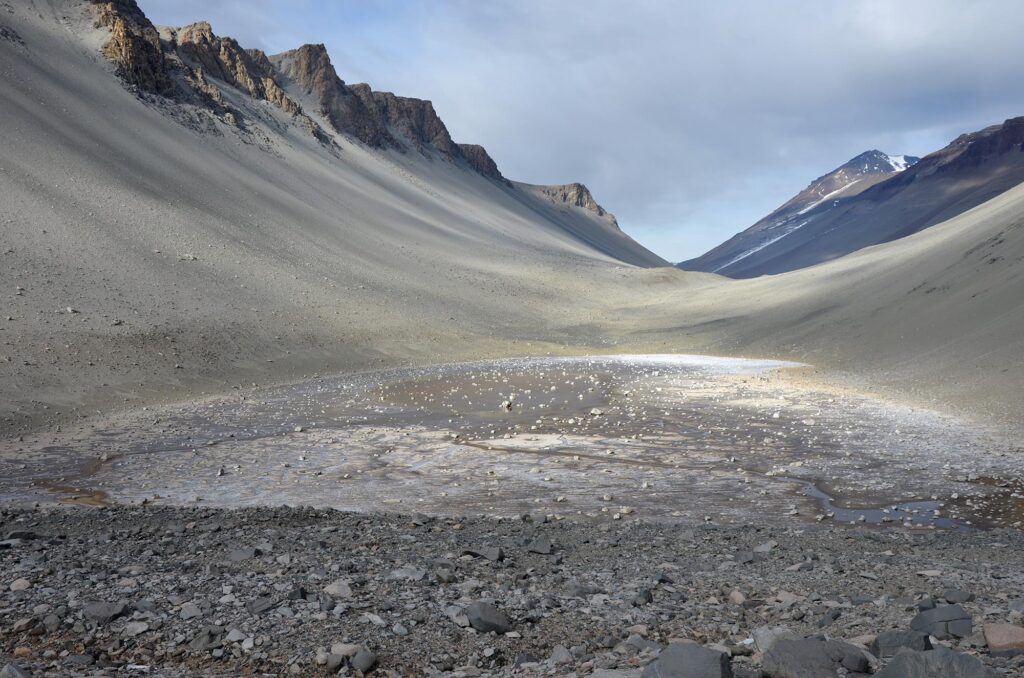
Another example of Mars-like environment on Earth is Iceland, where there are basaltic rocks with high iron content and active volcanoes among the glaciers. The Atacama Desert in Chile has been compared to the red planet due to its very dry climate and similar mineral composition; the desert in Arizona — due to basaltic volcanism with stratified rocks; and Hawaii — due to the presence of large basaltic shield volcanoes similar to the Martian Olympus Mons (volcanic cone of Olympus — the highest volcano in the Solar System).
Microscopic “extremes”
Earth’s extremophilic microorganisms (archaea, bacteria, microscopic fungi, algae, protozoa) can become small “helpers” in the development of other planets and satellites. These living organisms are able to exist in the most extreme conditions of our planet — from the hot, dry deserts of Africa, Asia, and America to the cold deserts of the Arctic and Antarctica. Even such seemingly uninhabitable ecological niches as geysers, “black smokers” (geysers in places where tectonic plates on the ocean floor are cracked), radon sources, salt marshes are quite comfortable for the life of extremophile microorganisms. The range of viability of these creatures is extremely wide and truly impressive.
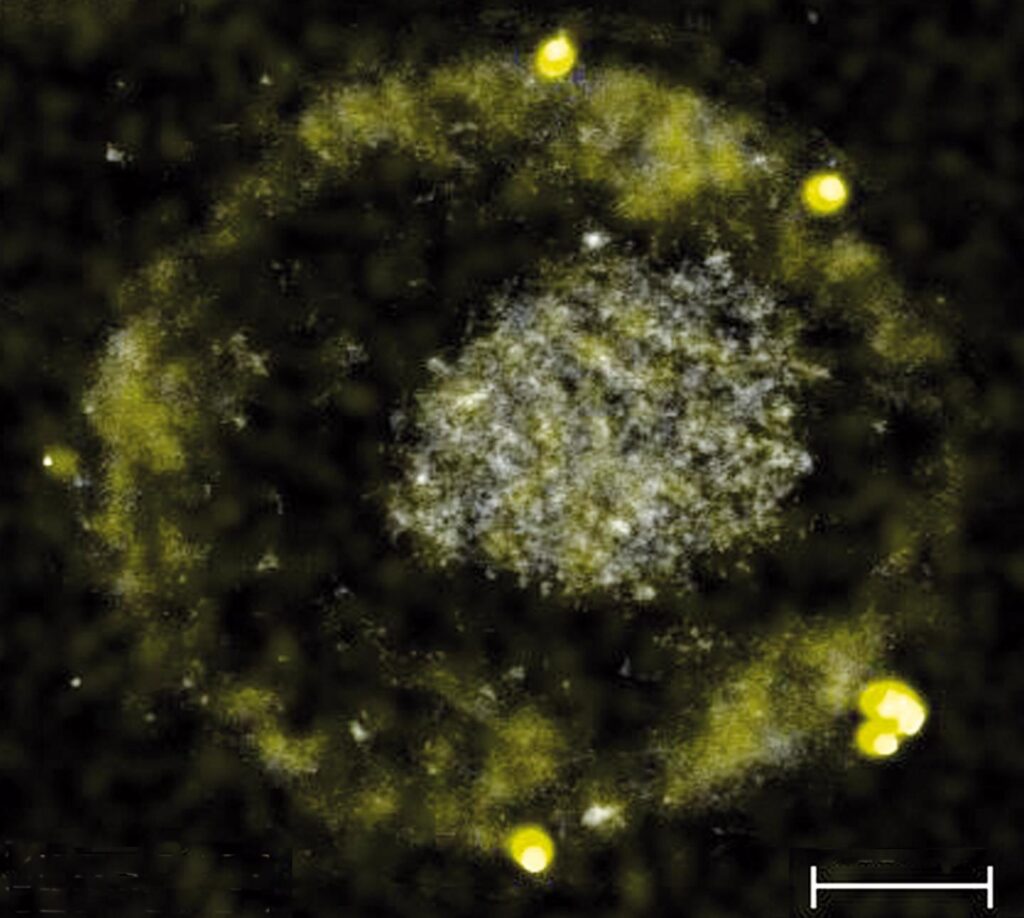
The rapid development of extremophile research began in 1969, after Thomas Brock discoved bacillus Thermus aquaticus living in a boiling geyser of Yellowstone National Park. The optimal temperature for its growth is +79°C). Extremophiles are most often distinguished, by the “thrills” they love, namely: psychrophiles (cold-loving) and thermophiles (warm-loving), acidophiles (resistant to acidic environments) and alkalophiles (love alkaline environments), xerophiles (resistant to drought), halophiles (tolerant of high salinity ), barophiles (inhabitants of a high-pressure environment) and osmophiles (live at high osmotic pressure values), radioresistant (withstand ionizing and UV radiation) and metal-resistant organisms (resistant to heavy metals and their salts), as well as other “extremes”, tolerant to the action of a wide range of toxic substances. Very often, living beings combine resistance to several different extreme factors, that is, they are polyextremophiles, and possess unique biochemical defense mechanisms.
Habitats of polyextremophiles that thrive at multiple extremes are excellent models for potential extraterrestrial habitats. Prominent representatives of polyextremophiles are sulfur-oxidizing bacteria living in an acidic hydrothermal vent under high pressure in the Guaymas Basin (Gulf of California), psychrophilic halotolerant (salt-tolerant) permafrost bacteria in Siberia, and barophilic inhabitants of the ice-bound lakes of the Arctic and Antarctic.
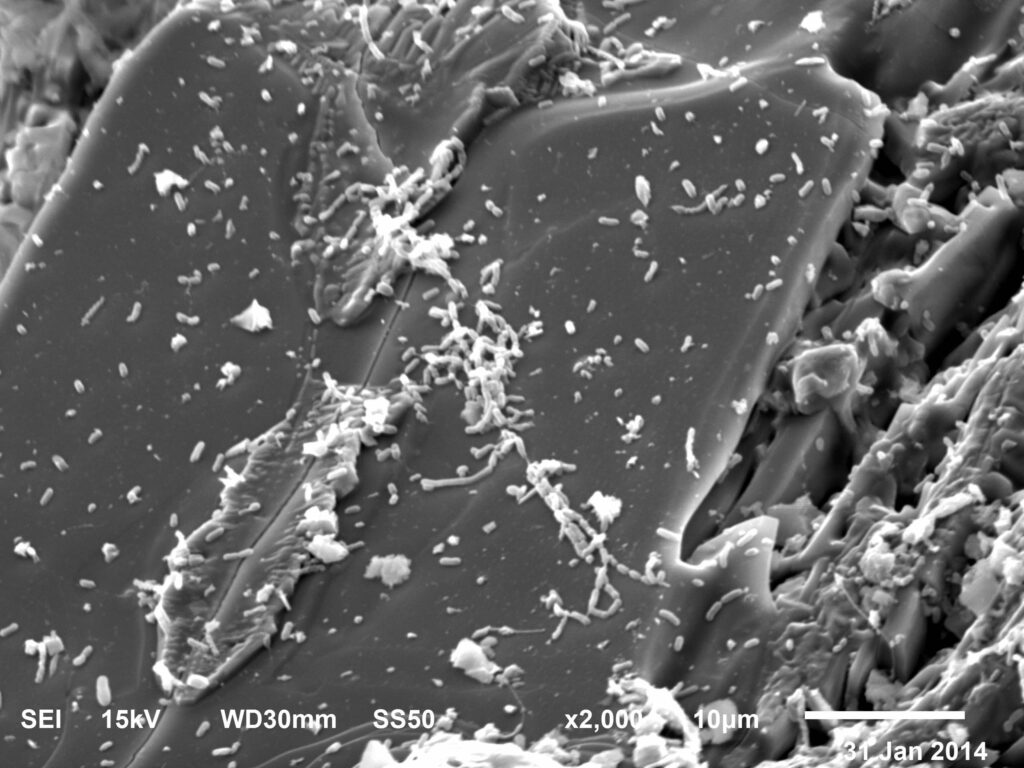
Of course, polyextremophile microorganisms with all possible combinations of resistance to harsh conditions are not found on Earth. However, the rapid development of genetic engineering can lead to constructing living beings with superpowers, which can potentially be useful in the colonization of planets and their satellites. Artificially engineered organisms are likely to aid in mining, environmental sensing, and production of food, fuel, and building materials.
In 2020, an article was published in the Nature Communications journal, where scientists experimentally demonstrate the potential of bacteria in the extraction of minerals under the gravity close to that on Mars. The “appetite” of bacteria for various rocks of the Earth’s surface has been known for a long time and has been successfully used by mankind in the bio-mining of various substances, including precious metals. The ability of microorganisms to “feast” on certain minerals is used in the purification of contaminated soils and waters (the so-called bioremediation). All these “talents” of bacteria can be used in space missions. In addition to mining, the little helpers can be involved in soil formation on satellites or planets, producing a “biocrust” to control dust in confined space, producing biofuel from space regolith, and more.
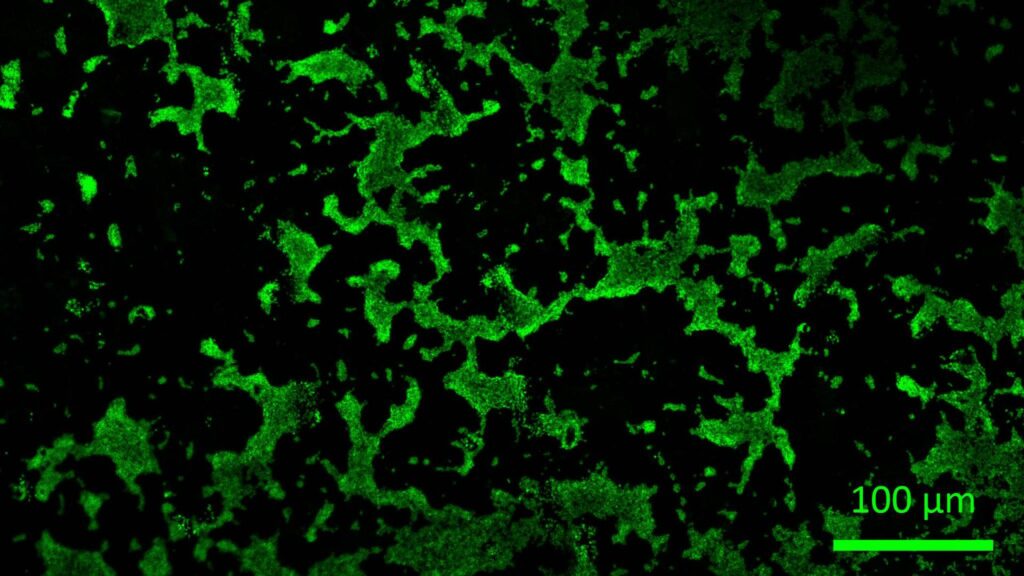
It is known that altered conditions of gravity (including microgravity) affect the growth of microorganisms and their metabolism. Although the ability of bacteria to directly sense gravitational changes is a matter of debate, an indirect effect does occur through changes in sedimentation and fluid mixing (mixing of nutrients and waste).
In order to test the influence of different values of gravity on the ability of bacteria to “gnaw” stones, an experiment called BioRock was carried out. The experiments were conducted in 2019 by the European Space Agency on the ISS in zero-gravity conditions. Astronauts studied the ability of three strains of bacteria Sphingomonas desiccabilis, Bacillus subtilis and Cupriavidus metallidurans to bio-extract elements from basalt (a type of volcanic rock commonly found on the Moon and Mars).
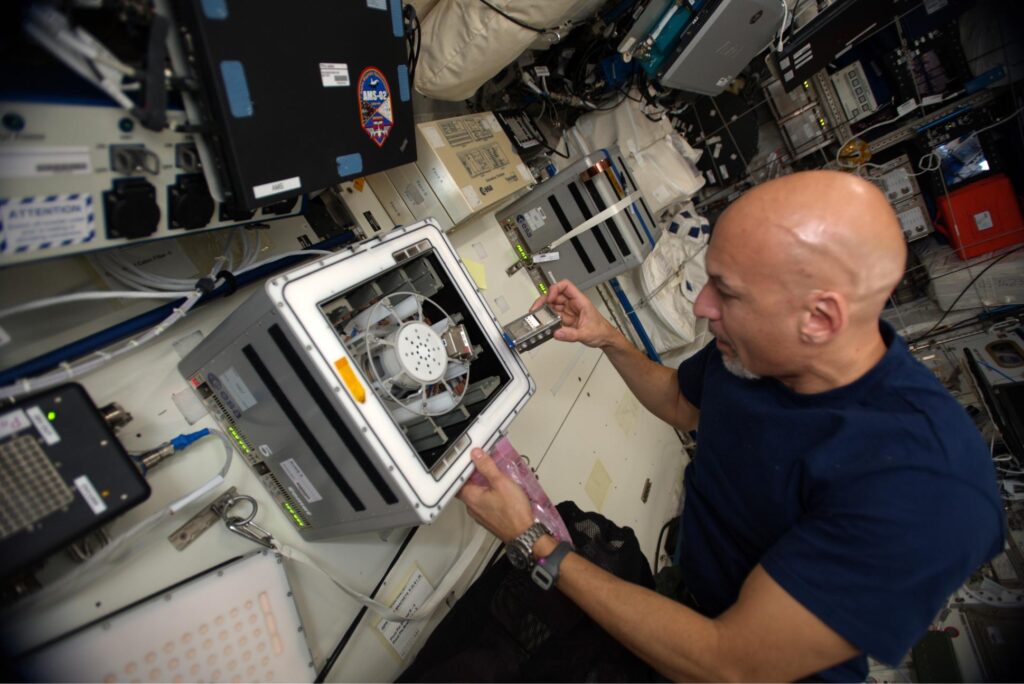
All three strains met the following criteria: they were resistant to desiccation, could grow on solid surfaces and/or form biofilms, as well as interact with rock surfaces and/or be capable of bioleaching chemical elements (biomining). For the experiment, typical strains from different locations were taken, namely: the species Sphingomonas desiccabilis from soil crusts on the Colorado Plateau, Bacillus subtilis, which is found everywhere, including on stones, and Cupriavidus metallidurans from mountainous areas and environments contaminated with metals.
The miniature bioreactor was specially developed for testing in space. It contained basalt rocks from Iceland (Gufunes, Reykjavik), which are very similar in chemical composition to basalt from the Moon and Mars. Plates of these rocks were immersed in different bacterial solutions for 21 days, and different gravities were simulated using a centrifuge. The experiment compared the bioleaching (mining) of fourteen rare earth elements in conditions of microgravity, simulated Martian and terrestrial gravity. The bacterium Sphingomonas desiccabilis turned out to be the most successful in the “mining business”, which perfectly “extracted” rare earth elements from basalt at all gravity values.
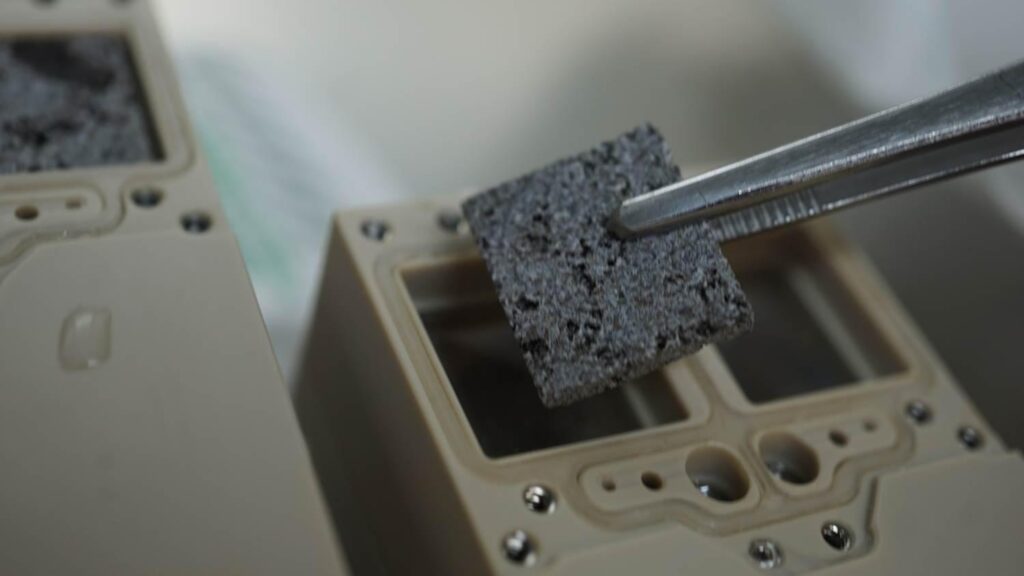
This experiment showed the effectiveness of the interaction of bacteria with minerals and the successful biomining of minerals in space, which is another step in achieving the dream of a permanent human presence beyond the Earth’s vicinity. The ability to extract various metals from the rocks of the Moon and Mars will greatly facilitate the colonization of these space objects, and will make it possible to build colonies on the spot in the future, without additional efforts to transport resources from Earth. Probably, all these dreams will soon come true with the help of one of the most ancient life forms on Earth — bacteria.
However, there is hope that one day humanity will be able to colonize other planets and, as in the stories “The Martian Chronicles” by the legendary Ray Bradbury, some ordinary family will be able to open their hot-dog shop on Mars for space tourists. But as for now let us move forward to new amazing discoveries and enjoy the incredible planet Earth!

